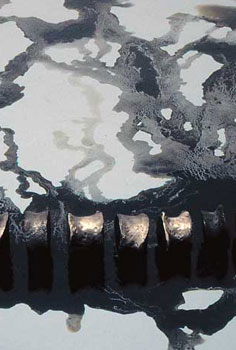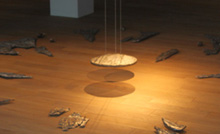Anthony Slessor
Reviews
Brian Catling, Oxford 2010
Soldier, sculptor, pilot, diplomat, teacher - Slessor balances a flock of talents to invent a creative equilibrium where others would only find difference and contradiction. He is a highly talented artist who’s daring and beautiful work questions the very nature of substance, force and metaphor. These very unusual elements are bound together by a reflective and poetic sensibility that is always engaged with creative invention.
A soldier-poet may seem out of kilter with present social values but in Slessor’s case it offers a unique opportunity and perspective on current turmoil, and an attitude towards healing it.
The sculpture is surprising, powerful and enigmatic. Its emotional clarity speaks to all and avoids the meagre and obscure soliloquies that so much contemporary art indulges in. His use of transformation and exchange in materials and processes makes the work available and significant for all manner of speculation. The work also deals with atmosphere and the capture of spirit in inert materials. To this end he has made sculpture for specific places, often being drawn to sites of historical and spiritual significance. His sense of place and the mystery of presence are not whimsical, but the profound conjectures of an inquiring mind and his experience of conflict and famished communities throughout the world gives his art works a rare depth and dignity.
Using the transmutation of matter to redefine physical and emotive space, he is continually interrogating gravity by making works that both embrace and defy it, and he has an almost antagonistic curiosity with this binding force of nature. This may derive from, or be influenced by, his former profession as a helicopter pilot.
His visual and experiential relationship with dimension and distance are unlike those of other artists, producing high contrasts in his sculptural languages. These only seem extreme when viewed from the pallid perspective of stylistic dogma. Slessor’s sculptures are poetic experiments stealthily charging at each other from opposite ends of process and form.
With a passion for fertile and malleable materials he has moved through carving, forging, and casting, into conjugations of ice, resin, and steel. Boiling tree sap is poured into water and stiffened to ice. The intricacies of temperature calligraphed and locked until melting. Smooth industrial trunks of steel, cut and forged to draw a spine like sentence, bleeding black ink, across the floor. These works of harsh defiant beauty are out of time with limp fashions. Their handmade geology resonates to a deeper impulse.
Brian Catling, Oxford, November 2010


